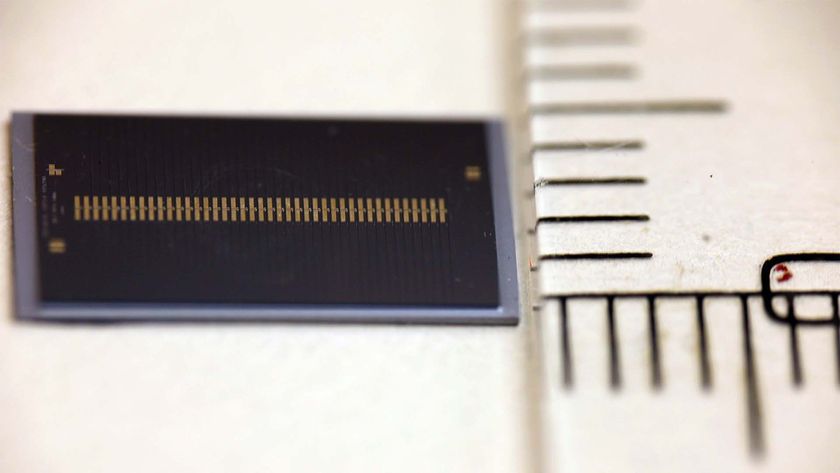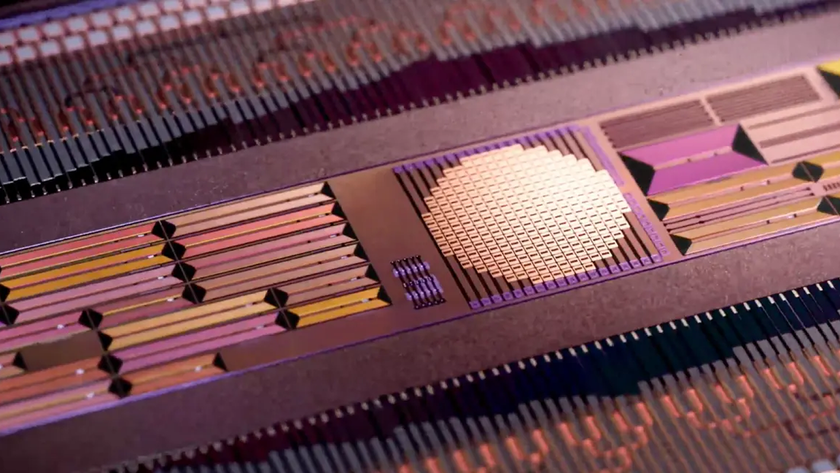The End of Cell Phone Chargers Is Near
When your cell phone is running out of juice, you usually have two options: pray your charger is handy, or pray that someone with your exact phone model has his or her charger on hand.
Fortunately, a wave of common sense and innovation promises to eliminate the aggravating paradigm of one-size-fits-one cell phone charging.
With universal chargers, wireless charging pads and, eventually, the reaping of energy straight from the air via ambient radio waves, chargers could go the way of the rotary phone.
The end of chargers as we know them will be "one of those things that make you say, 'What took so long for the industry to do this?'" said Michael Gartenberg, an analyst at the Altimeter Group.
Charge! (Wastefully)
Beyond being a nuisance to consumers, the proliferation of phone-specific chargers is bad for the environment. According to the London-based GSM Association (GSMA), a mobile phone industry group, over 56,000 tons (51,000 tonnes) of duplicate chargers are sold to customers every year, generating pointless e-waste for landfills.
Cutting in half the number of chargers being made could reduce greenhouse gases related to manufacturing and transportation by 15 million to 24 million tons (13.6 million to 21.8 million tonnes) a year, GSMA said.
Sign up for the Live Science daily newsletter now
Get the world’s most fascinating discoveries delivered straight to your inbox.
An available, though clunky, stab at this goal is the so-called universal cell phone charging kit.
The kit, which can sell for as little as a few dollars, includes a multitude of adapters that, like drill bits, fit over the coupling at the phone end of a power cord. The chargers from most cell phones can then function as that crucial umbilical that keeps a phone alive even without its native charger.
But as with your regular charger, if you forget the kit while traveling, your phone battery's life is likely doomed.
One charger to rule them all
Fortunately, a one-size-fits-all approach to chargers is afoot. GSMA is pushing a worldwide effort to adopt a universal charging solution by 2012. Last year, the organization announced that 17 major mobile operators and manufacturers were on board.
Europe is already ahead of the game. Starting next year, most cell phones sold there will use the same, interchangeable charger called a micro-USB connector, as advocated by the GSMA.
Some smartphones sold in the United States, including the Nexus One, Incredible, EVO and some BlackBerrys, also have opted for micro-USB, so some degree of harmonization has already taken root.
Though Apple signed the agreement in Europe calling for a universal charger, there is some speculation that the company will be a bit of a holdout. Apple has historically relied on a proprietary 30-pin charging device for its line of "i" products, something that Apple acolytes appreciate, Gartenberg noted.
Without wires
Just as the cordless phone did away with the wire from handset to base station, a wireless charging solution might eliminate a wired charging connector.
"Inductive charging" technology allows a gadget to passively absorb energy from an electromagnetic field over short distances. Electric toothbrushes have gotten their energy from inductive charging for decades.
Using this technology, powering up a properly outfitted phone could be as simple as placing it on a charging mat or dock.
Although Palm did roll out an inductive charging dock called the Touchstone a year ago, phone manufacturers in general have not taken a shine to the idea.
For other phones, inductive chargers made by third-party vendors such as Powermat require the placement of a sleeve around the handset.
Gartenberg sees this as a key reason why wireless charging is unlikely to catch on. "Unless the charger is directly integrated into the device" – as with Palm – "it's hard to see how third-party stuff is going to be successful," he said.
He also pointed out that charging this way is not really any easier than manually connecting a charger as we do now.
And in the end, one still must remember a charging mat or dock when going on a trip, and the wireless charging rig still needs an outlet or a USB port to plug into to draw power.
Ambient energy
Even that hurdle may be overcome in the future with technology that charges batteries with energy in the air. This ambient energy comes in the form of the radio waves our wired world zaps all over in order to transmit cell phone, Internet, television and radio station signals.
It is already possible to harness this energy to fuel tiny sensors. But a cell phone demands more power – some 20 milliwatts just for standby mode, and 50 milliwatts to slowly recharge its battery, according to statements from Nokia.
For now, power on the order of only several tens of microwatts has been credibly harvested from the ether, said Joshua Smith, a University of Washington professor who works with ambient charging as a principal engineer at Intel Labs Seattle.
Since the invention of cell phones, however, their power requirements have fallen exponentially, Smith said, and someday "might drop enough to have a phone in standby forever."
Perhaps even more useful would be an always-on-and-available emergency beaconing feature, Smith said.
RCA plans to launch a product late this year called AirPower (previously dubbed Airnergy) that will glean wi-fi signals to charge cell phones, though the company would not release concrete details.
Smith is skeptical that AirPower or other full-fledged charging solutions from ambient energy for cell phones will work anytime soon.
Altimeter Group's Gartenberg agreed. "For the foreseeable future," he said, "most of us are still going to be plugging that cable into the wall."












